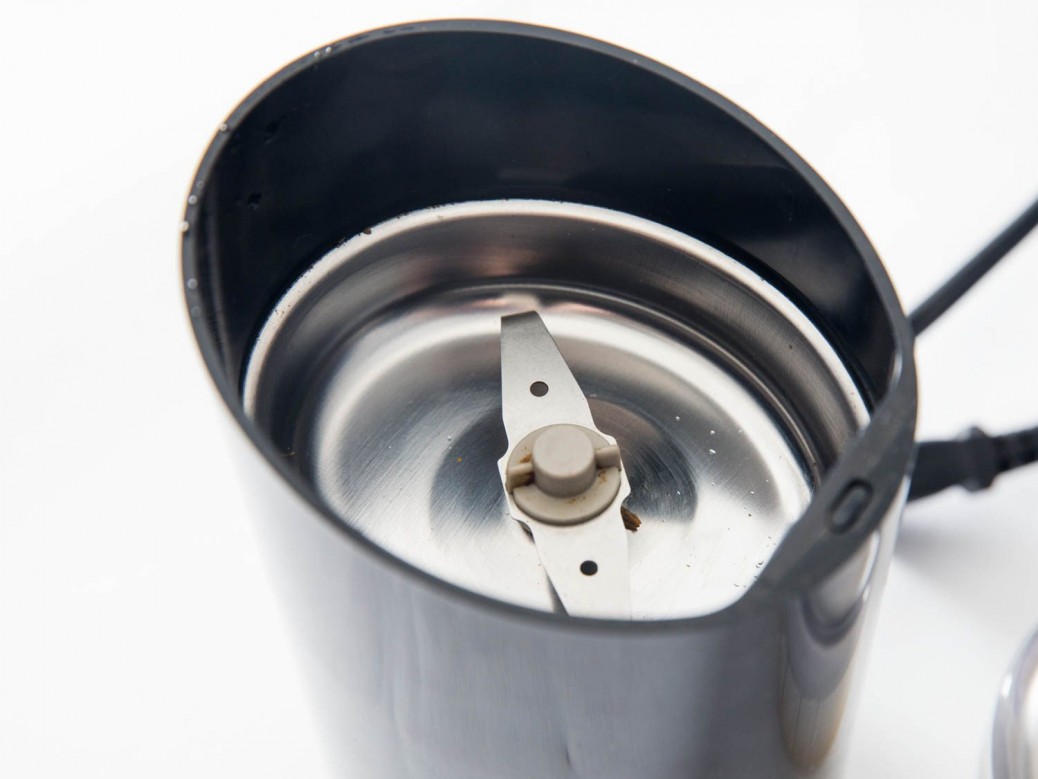Knowledge, Information and Experience
The Joy of Cooking – suggests a blade grinder may be cleaned by grinding a few tablespoons of sugar then wiping it out. Another suggestion is to clean around the blade with a soft brush or a damp cloth. Because these blade grinders frequently are used for grinding both coffee beans and spices, cleaning them well is important to prevent unwanted transfer of flavors. Some people keep two blade grinders, one for coffee and the other for spices.
Design
A blade grinder may be considered a type of hammermill. A blade grinder resembles a meat grinder in that both have propeller-shaped cutting blades. However, meat grinders (and food mills) use a scissor cutting action as the blades rotate against a perforated metal plate. Meat grinder blades rotate at a much slower speed than blade grinders.
Blade grinders also resemble industrial blade (propeller) mixers, which like meat grinders rotate at much slower speeds. Unlike blade grinders, these mixers do not alter (break, cut, shred, macerate, pulverize) the material being mixed. The high speed of rotation of blade grinders is necessary to achieve their cutting action. In a blender application, the high speed of rotation contributes to shearing, which in turn contributes to aeration and the formation of emulsions. These are desirable qualities in many food preparations. A blade grinder can run on batteries or more commonly on electricity.
History
Blade grinders are a 20th-century innovation that followed the adaptation of propellers to small motorboats.[citation needed] Blade grinders exploit a feature of propellers that is undesirable in the propulsion systems of boats and airplanes: the higher the rotation speed, the more energy is spent in shearing and cutting rather than in pushing. Rotary lawn mowers were not developed until small engines became powerful enough to run the blades at a speed high enough to cut.
Commercial blenders were developed in the 1920s. With increasing miniaturization of the electric motor, the first consumer blender, the Waring Blendor, was developed in the 1930s, and a canister blender, the Osterizer, entered the market in 1946. The first immersion blenders were patented in the 1950s.
In short Grinder’s function is Rotation. Similarly Earth also rotate.
Rotation of the Earth:
The Earth’s axis is vertical, meaning it runs up and down. The Earth’s axis runs from the North Pole to the South Pole. It takes the Earth 24 hours, or one day, to make one complete rotation around this invisible line.
As the Earth rotates, each area of its surface gets a turn to face and be warmed by the sun. This is important to all life on Earth. The sun affects everything from the weather we experience to the food we eat, and even our health. If the Earth did not rotate, one half of the Earth would always be hot and bright, and the other part would be frozen and dark.
The Earth also moves around the sun. This movement is called a revolution, which is different from rotation. Objects rotate around an axis, but revolve around other objects. So the Earth rotates around its axis as it revolves around the sun. It takes the Earth 365 days, or one year, to complete a revolution.











